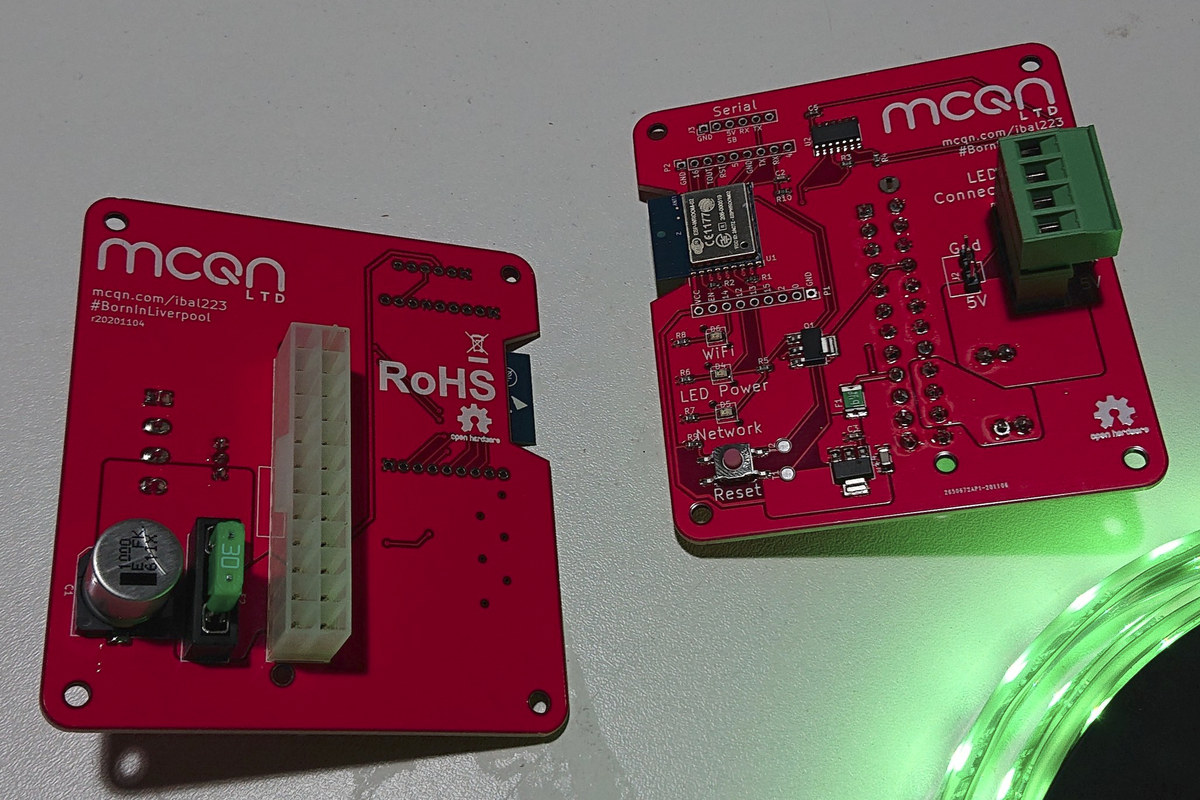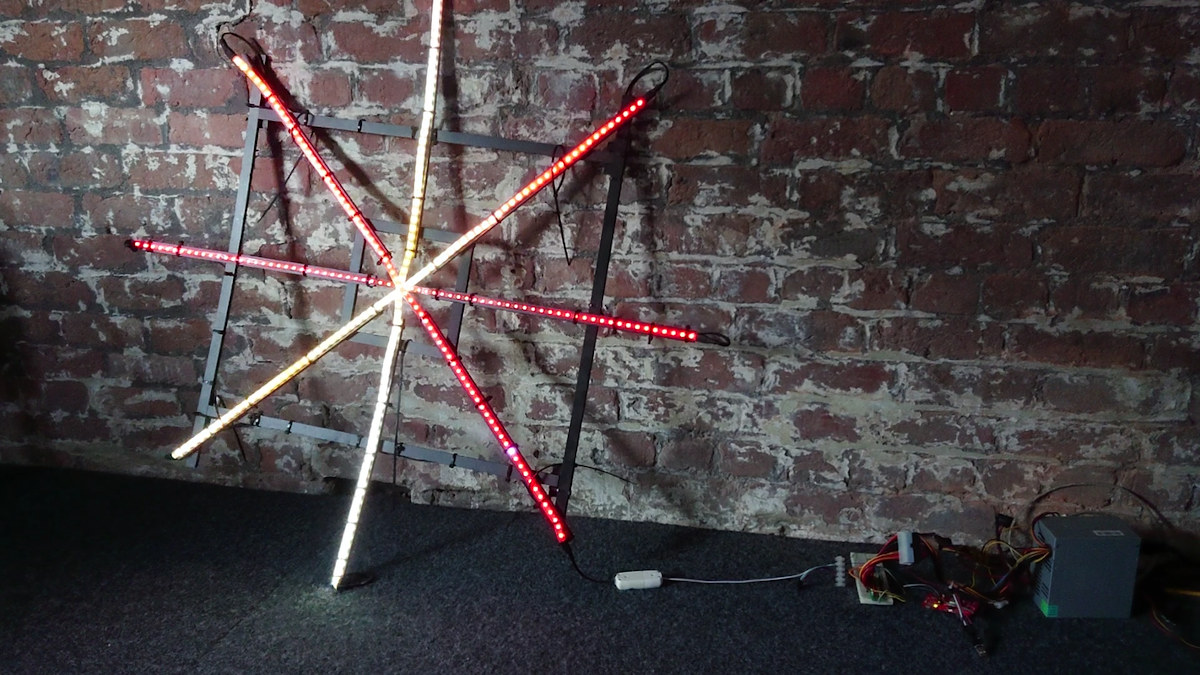“Adding Open Hardware to Open Software for a More Equitable IoT” talk at FOSDEM 2021 discussed the importance of open-source hardware and software for IoT devices, notably to avoid getting a brick after the cloud service is suddenly terminated.
Adrian McEwen then specifically talked about his “My Baby’s Got LED” ESP8266 open-source hardware board powered by… a USB charger? nope. A battery? You’ve got to be kidding. Instead, the ESP8266 board is equipped with an ATX connector taking a standard power supply found in PC towers and desktops.
But why? That’s because the board is designed to control a string of Neopixels/WS2812 RGB LED’s, and a 500W ATX power supply can power up to 500 lights.
MCQN’s “My Baby’s Got LED” board specifications:
- Wireless module – ESP-WROOM-02 ESP8266 module with WiFi 4 connectivity
- LED strip connector – 4-pin terminal block
- Expansion – 2x 9-pin unpopulated 2.54mm pitch header for easy access to pins from the wireless module
- Debugging – Serial header for programming (and power while programming since you probably don’t want to connect the ATX power supply at that time)
- Misc – WiFi, LED Power, and Network LEDs; Reset button
- Power Supply – 24-pin ATX connector for power supply
Designed with KiCad, the board is open-source hardware, and comes pre-programmed with the WLED webserver to control NeoPixel to make things easy. You just need to connect the LED strip and fasten the wires with the screw terminals, plug in the PC ATX power supply, and connect your phone or PC to the WLED WiFi access point to control the lights.
WLED also works with WLED mobile app for Android or iOS, and for integration with home automation systems, it also supports JSON and HTTP request APIs as well as MQTT protocol among others.
The board is sold on MCQN’s Tindie store for $55 plus shipping. You can also find additional information on the product page, and if you want to learn more about the development process, check out the slides from the FOSDEM talk.

Jean-Luc started CNX Software in 2010 as a part-time endeavor, before quitting his job as a software engineering manager, and starting to write daily news, and reviews full time later in 2011.
Support CNX Software! Donate via cryptocurrencies, become a Patron on Patreon, or purchase goods on Amazon or Aliexpress






